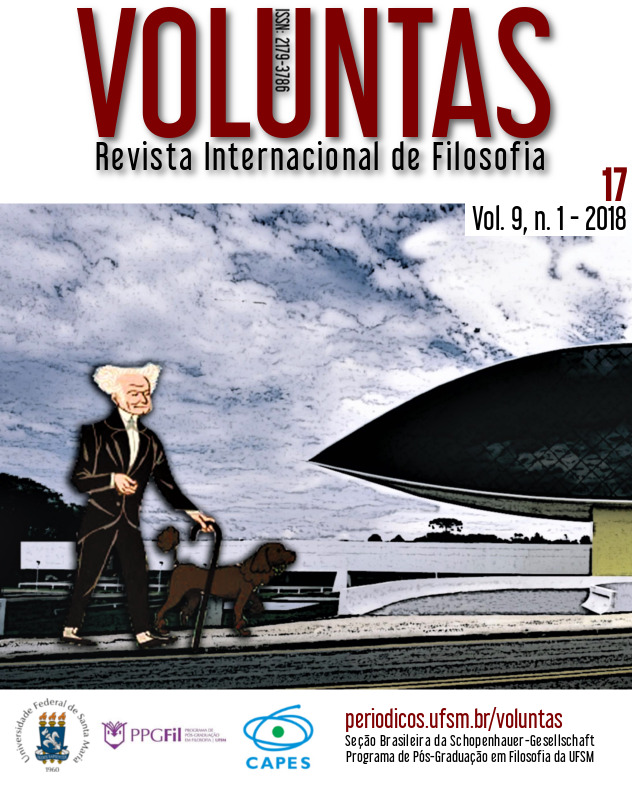The first philosophical conception of Schopenhauer
DOI:
https://doi.org/10.5902/2179378633257Keywords:
Consciência melhor, “Verdadeiro criticismo”, Primeiro romantismoAbstract
Em geral, a assim denominada doutrina da consciência melhor é vista como a primeira concepção filosófica de Schopenhauer. Nos Manuscritos, porém, antes da primeira aparição do conceito de “consciência melhor”, aparece várias vezes como projeto a expressão “completo” ou “verdadeiro criticismo”. Com essa intenção, Schopenhauer almejava ir além do criticismo de Kant ao remediar seu “maior erro”, a saber, o descuido com relação à contemplação estética e ao significado do conhecimento intuitivo em oposição ao conceitual. Essa tentativa, que, por um lado, introduziu o conflito com Kant, e por outro, guarda uma proximidade com os projetos filosóficos do primeiro romantismo, será discutida nesta investigação.Downloads
References
APP, U. Schopenhauers Kompaß. Die Geburt einer Philosophie. Rorschach: University Media, 2011.
ARNIM, A. Verhältnis der chemischen Ausbildung zur poetischen. Weimar: Goethe-und-Schiller-Archiv.
HÜBSCHER, A. Der Philosoph der Romantik. Schopenhauer-Jahrbuch, 34 (1951/1952).
NOVALIS. Die Lehrlinge zu Sais. Berlin: Buchhandlung der Realschule, 1802.
NOVALIS. Schriften I-VI. Darmstadt: Wissenschaftliche Buchgesellschaft, 1977-2006.
NOVEMBRE, A. Die Dissertation 1813 als Einleitung zu einer geplanten »größeren Schrift« über das »bessere Bewußtsein«. Schopenhauer-Jahrbuch, 97 (2016), pp. 133-146.
SCHELLING. F. Einleitung zu seinem Entwurf eines Systems der Naturphilosophie. Stuttgart: Reclam, 1988.
SCHOPENHAUER. Die Welt als Wille und Vorstellung. I u. II. In: Sämtliche Werke. Hrsg. Arthur Hübscher. Wiesbaden: Brockhaus, 1946-1950.
SCHOPENHAUER, A. Der Handschriftliche Nachlass. Hrsg. Arthur Hübscher. Bb. I-V. München: Brockhaus, 1985.
Downloads
Published
How to Cite
Issue
Section
License
The submission of original manuscripts to this journal implies the transference, by the authors, of the copyrights for printed and digital publication. The copyrights of a published manuscript belong ultimately to the author, and only the copyright for its first publication is reserved to the journal. Authors may only use the same results in other publications explicitly indicating this journal as the medium of the original publication.
Licence
Attribution-NonCommercial-ShareAlike 4.0 International (CC BY-NC-SA 4.0) - This license lets others remix, tweak, and build upon your work non-commercially, as long as they credit you and license their new creations under the identical terms.






